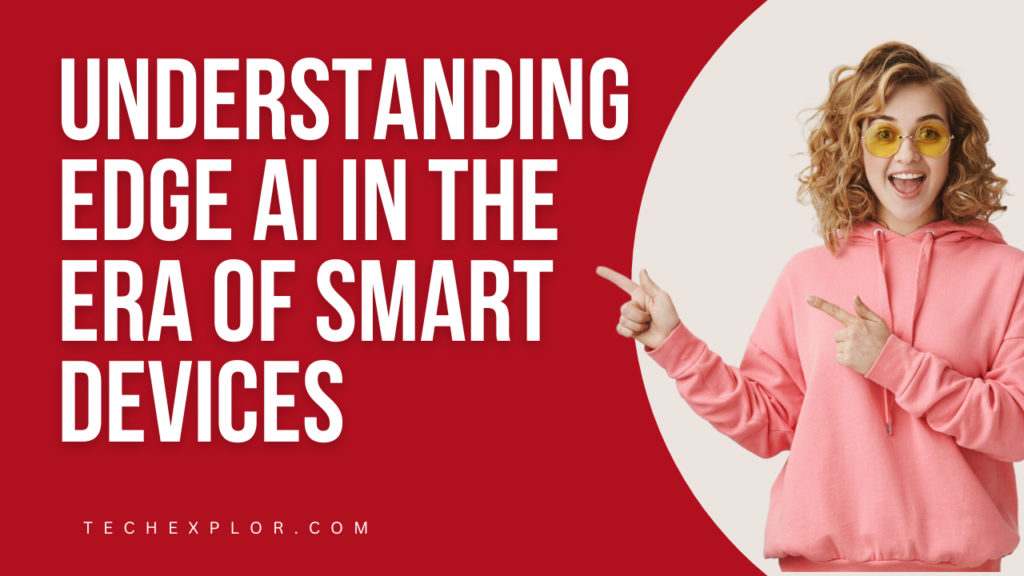In the fast-paced world of technology, the evolution of smart devices has become a cornerstone of everyday life. From smartphones and smartwatches to smart homes and autonomous vehicles, these devices have rapidly transformed how we live, work, and interact with the world around us. Behind the scenes, a revolutionary technology is reshaping the way these devices process information and make decisions: Edge AI.
But what exactly is Edge AI, and how is it revolutionizing the way smart devices function? Let’s dive in.
What is Edge AI?
Edge AI refers to the integration of artificial intelligence (AI) into edge devices – devices that operate outside the traditional centralized cloud computing system. Instead of sending data to the cloud for analysis and receiving instructions from a remote server, edge AI enables smart devices to process data locally, near the source, on the device itself or nearby (the “edge” of the network).
This technology allows devices to make real-time decisions by utilizing AI algorithms and models directly on the device, reducing the need for constant data transfer to a central server. By doing so, it enhances performance, speeds up response times, and ensures greater privacy and security.
How Edge AI Powers Smart Devices
1. Real-time Decision Making
One of the biggest benefits of Edge AI is the ability to make real-time decisions. In traditional cloud computing, data needs to be transmitted to a centralized server for processing, and the response is then sent back to the device. This process introduces latency, which can be a significant drawback in scenarios requiring instant decisions.
For instance, in self-driving cars, the AI must process data from various sensors, cameras, and other inputs in real-time to make split-second decisions about navigation and safety. By using Edge AI, these vehicles can process data on the vehicle itself, ensuring immediate responses and reducing the risks associated with latency.
Similarly, in smart cameras used for security, edge AI enables real-time image recognition. These devices can detect motion, identify faces, or recognize specific events without waiting for cloud-based processing. This leads to faster alerts and more efficient monitoring.
2. Reduced Latency
Latency, the delay between input and output, is a major concern for applications requiring quick responses. In traditional cloud-based systems, data must travel from the device to the server, get processed, and then return to the device. This round-trip can add significant delays, especially for time-sensitive applications.
Edge AI minimizes this latency by processing data locally, right where it’s generated. For example, smartphones powered by Edge AI can process your voice commands, facial recognition, and gestures instantly, offering a smoother and faster user experience.
3. Privacy and Security
With Edge AI, sensitive data never has to leave the device, significantly enhancing privacy and security. In cloud-based systems, user data is transferred over the internet, which could potentially be intercepted by malicious actors or be vulnerable to breaches.
Edge AI ensures that critical data, such as personal information or health metrics, remains on the device, reducing the risks of unauthorized access or cyberattacks. For instance, wearable devices like smartwatches can track your fitness data, heart rate, or sleep patterns without ever transmitting that information to a cloud server, ensuring your data stays private.
4. Bandwidth Efficiency
As the number of connected devices continues to grow, managing network bandwidth becomes a challenge. Sending vast amounts of data to the cloud for processing can quickly overwhelm the network and cause congestion. Edge AI alleviates this issue by reducing the need to send massive amounts of data to the cloud.
Instead, only relevant or summarized information is sent, while the more computationally intense tasks are handled at the edge. This results in more efficient use of bandwidth and reduces the load on cloud servers.
Use Cases of Edge AI in Smart Devices
Edge AI is already transforming a wide variety of smart devices. Here are some key areas where Edge AI is making an impact:
1. Smart Homes
In the context of smart homes, Edge AI is used in devices such as thermostats, security cameras, and voice assistants. For instance, a smart thermostat can learn your preferences for temperature control by processing data locally on the device, adjusting automatically based on your behavior and the environment, all without needing to connect to the cloud every time.
Smart speakers with voice assistants like Amazon Alexa or Google Assistant also rely on Edge AI to process voice commands quickly and locally, offering near-instant responses. This enhances the overall user experience by ensuring that voice recognition happens quickly and accurately.
2. Healthcare Devices
In the field of healthcare, Edge AI is particularly important for devices like wearable health trackers, which continuously monitor vital signs such as heart rate, oxygen levels, and even glucose levels in real time. By processing data on the device itself, these smart devices can send immediate alerts to users or healthcare providers if any abnormalities are detected, allowing for faster intervention.
For example, an AI-powered ECG monitor can analyze heart rhythms on the spot, detecting irregularities or conditions such as atrial fibrillation and alerting the user immediately, all without the need for cloud processing.
3. Smartphones and Tablets
Edge AI is transforming the way we interact with smartphones. From facial recognition to object detection and enhanced photography, smartphones now rely on AI algorithms to improve user experience. Face unlock and facial recognition technologies, for example, process biometric data directly on the device, ensuring that your personal information remains secure and that the recognition process is quick and seamless.
Moreover, camera apps use Edge AI to enhance image quality in real-time. AI-powered image enhancement algorithms adjust brightness, focus, and clarity instantly, providing stunning photos without the need for manual editing.
4. Industrial IoT Devices
In industries such as manufacturing, Edge AI helps optimize operations by enabling IoT devices to make autonomous decisions. For example, smart sensors placed on machinery can detect abnormalities like wear and tear or equipment malfunctions. By processing this data at the edge, these sensors can trigger immediate responses, such as sending maintenance alerts or shutting down machinery to prevent further damage, without waiting for cloud instructions.
The Future of Edge AI
As the number of connected devices continues to grow, the importance of Edge AI will only increase. In the near future, we can expect even more advanced and capable smart devices powered by Edge AI, capable of performing increasingly complex tasks with low latency and high privacy.
Additionally, as AI models and algorithms continue to evolve, Edge AI will become even more efficient, enabling new use cases that were previously not possible. With advancements in hardware, such as power-efficient processors and advanced neural networks, edge devices will continue to push the boundaries of what’s possible.
Conclusion
Edge AI is undoubtedly one of the most exciting advancements in the world of smart devices. By allowing devices to process data locally, this technology enhances performance, reduces latency, ensures privacy, and optimizes bandwidth usage. Whether it’s in smart homes, healthcare, industrial applications, or everyday consumer electronics, Edge AI is transforming how we interact with the digital world.
As we continue to innovate and create smarter devices, Edge AI will play a crucial role in shaping the future of technology, making our lives more efficient, secure, and connected than ever before.



